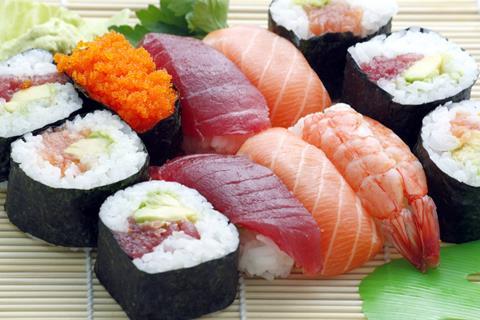As a general rule, it is completely safe to eat sushi in Norway, but it also carries a health hazard, both for individuals and for society at large.
“Bacteria in sushi, sashimi and cold-smoked fish products can pose a risk to people who eat such foods frequently, especially people with weak immune systems, children and the elderly,” says Hyejeong Lee.

She recently completed her PhD at the Department of Biotechnology and Food Science at NTNU. In her thesis, she investigated different varieties of Aeromonas bacteria in seafood products that do not undergo extensive processing. Without heat treatment or the use of other antibacterial methods, the risk of bacteria levels becoming high increases sharply.
Raw seafood
“The goal was to gain more knowledge about Aeromonas in this type of seafood – both the bacteria’s role in the deterioration of the product and in causing disease. Furthermore, we wanted to see if raw seafood can spread antibiotic-resistant bacteria,” says Dr. Lee.
Listeria monocytogenes is probably the best-known pathogenic bacteria related to raw or mildly processed seafood. However, the prevalence of Aeromonas in these kinds of products has worried scientists for some time.
READ MORE: New method enables efficient isolation of raccoon-borne food poisoning pathogen
Lee’s point of departure was fish products that are readily available on the Norwegian market. She checked these products for Aeromonas bacteria.
“The results show that the mild processing these fish products receive does not guarantee that the growth of Aeromonas bacteria will be inhibited,” says Lee.
Bacterial growth
In other words, the processing of sushi, sashimi and cold-smoked fish is ineffective in preventing bacterial growth.
“The majority of these Aeromonas variants are possibly pathogenic and there are often several different risk factors associated with them,” says Lee.
Lee emphasises that the risk of getting sick from Aeromonas is admittedly very small, especially for healthy people.
“Aeromonas is often ignored when we talk about food safety. I think my research highlights that the food industry needs to pay more attention to these bacteria,” says Lee.
Antibiotic resistance
Aeromonas bacteria in the sea frequently exchange genetic material with other bacteria. This is especially unfortunate if this genetic material comes from bacteria that are resistant to antibiotics.
“Some strains of Aeromonas can also spread antibiotic resistance from one type of bacteria to another. Eating seafood infected by resistant bacteria is a likely way these bacteria can spread from marine animals and environments to humans,” Lee concludes.
Resistant bacteria are a growing problem around the world. Resistant bacteria do not cause more disease than other bacteria, but they are far more difficult to treat, because not all types of antibiotics work against them. In a worst case scenario, no antibiotics work at all.
Combating the spread
“To combat the spread of antibiotic-resistant bacteria, it is important that we adopt a broad approach that looks at animal and human health, food production and the environment together in order to achieve better public health,” says Anita Nordeng Jakobsen, associate professor at NTNU’s Department of Biotechnology and Food Science.
The associate professor points out that microorganisms are transferred between animals and humans via food and the environment, so reduced use of antibiotics alone is not enough to prevent bacterial proliferation.
Preventative methods include systematically monitoring and taking samples in production environments, finding good monitoring indicators, implementing measures when multidrug-resistant bacteria are detected in groups of animals, vaccination, as well as education and awareness-raising work in food production around the world.
Strict regulation by the authorities is probably the most important means of tackling the problem of antibiotic-resistant bacteria. However, individuals can make a difference by choosing raw produce from countries that only use small amounts of antibiotics in aquaculture, such as Norway.
Preventive or growth-promoting use of antibiotics is common in other parts of the world, especially Southeast Asia.







No comments yet